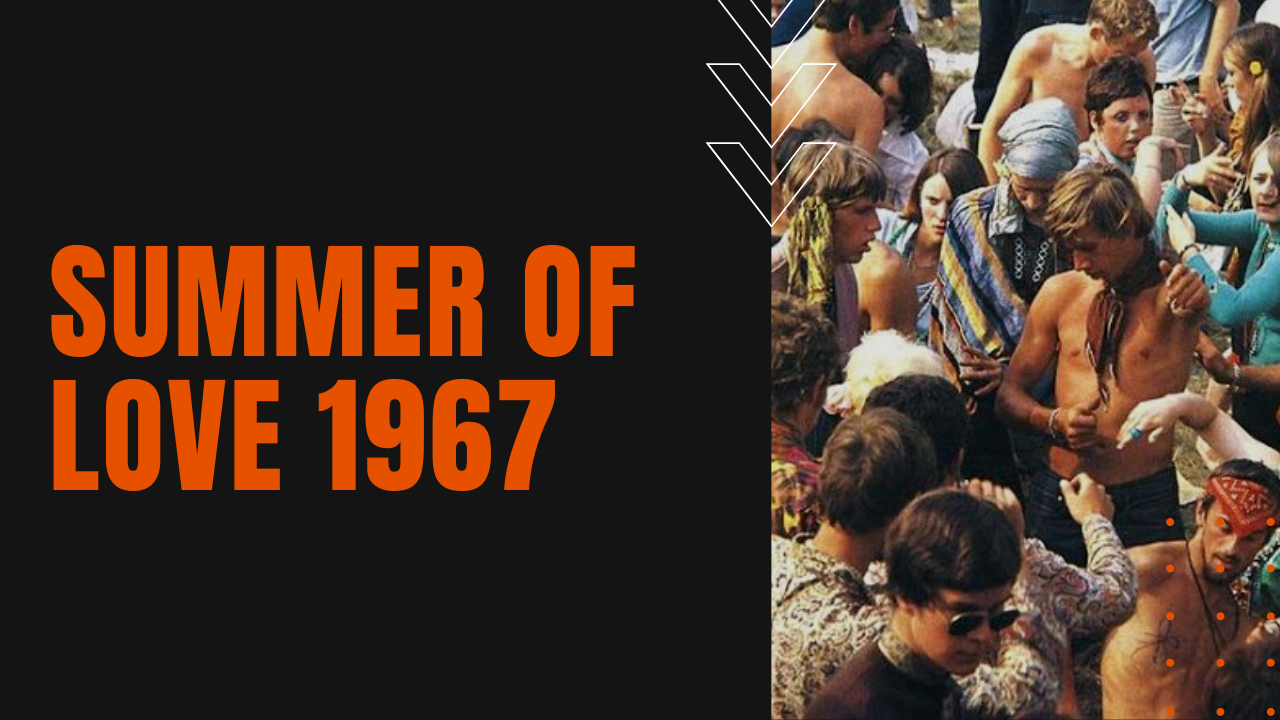Summer of Love 1967

Egged on by the Beat Generation poets and novelist of the 1950s, a group that flourished in the North Beach community of San Francisco, The Summer of Love hippie movement sprang to life after the Human Be-In held in Golden Gate Park on January 14th, 1967, when acid guru Timothy Leary coined the phrase:
“turn on, tune in and drop out.”
By the summer of 1967, more than 100,000 like-minded flower children migrated from around the country to the Haight-Ashbury district of San Francisco, vibing on hippie music, psychedelic drugs, anti-war sentiments and an overwhelming spirit of free love.
After Les Paul invented the electric guitar, the Baby Boom generation of the 1960s gravitated towards amplified rock n roll music, which was in direct conflict to the gentle swing-era dance tunes of their parent’s generation.
Ken Kesey and The Merry Pranksters
Flower children embraced a heavy mistrust of the government and the capitalistic ways of their parents, forming non-consumerist communal groups like the Diggers, who established a free store and a free medical clinic, while psychedelic groups like novelist Ken Kesey and The Merry Pranksters threw acid tests intended to unvalve the minds of the once stayed, largely suburban middle-class youth.
In the spring of 1967, The Council for the Summer of Love was created by the communal groups The Family Dog, The Diggers, The Straight Theatre and the hippie newspaper, The San Francisco Oracle, who sought to alleviate some of the problems anticipated from the influx of hippies expected to descend on Haight-Ashbury as the summer bore down.
The Council lent support to the Digger’s Free Clinic, before organizing housing, food, sanitation and links to local churches and social groups. When spring break came around, thousands of high school and college students descended on the Haight, causing alarm amongst San Francisco authorities, but once school ended for the summer, the onslaught pressed into high gear.
Radical journalist Hunter S. Thompson called the Haight “Hashbury” in an article in The New York Times Magazine, which further inspired more hippies to migrate west to San Francisco. Music festivals only further ignited the Summer of Love, including the Fantasy Fair and Magic Mountain Music Festival, as well as the Monterey Pop Festival, which drew hippies to the electrified sounds of The Who, The Grateful Dead, the Animals, Jefferson Airplane, Jimi Hendrix and Janis Joplin.
After the mass departure of hippies at the end of the summer, a mock Summer of Love funeral was held by organizer Mary Kasper, who issued a call to arms for all departed hippies, encouraging them to bring the revolution to wherever they called home.
As Grateful Dead guitarist Bob Weir commented:
“Haight Ashbury was a ghetto of bohemians who wanted to do anything—and we did, but I don’t think it has happened again since. Yes there was LSD, but Haight Ashbury was not about drugs. It was about exploration, finding new ways of expression, and being aware of one’s existence.”
